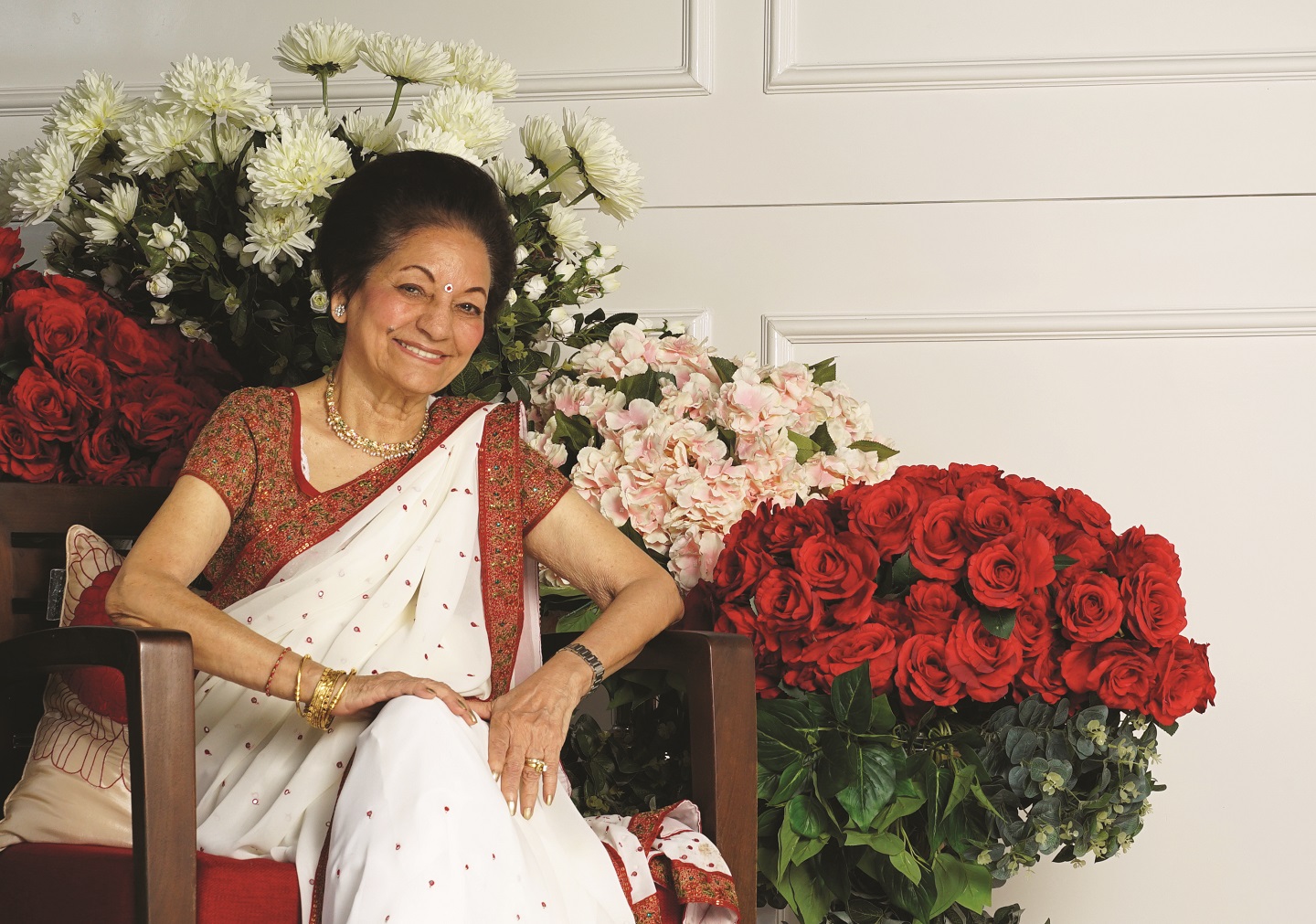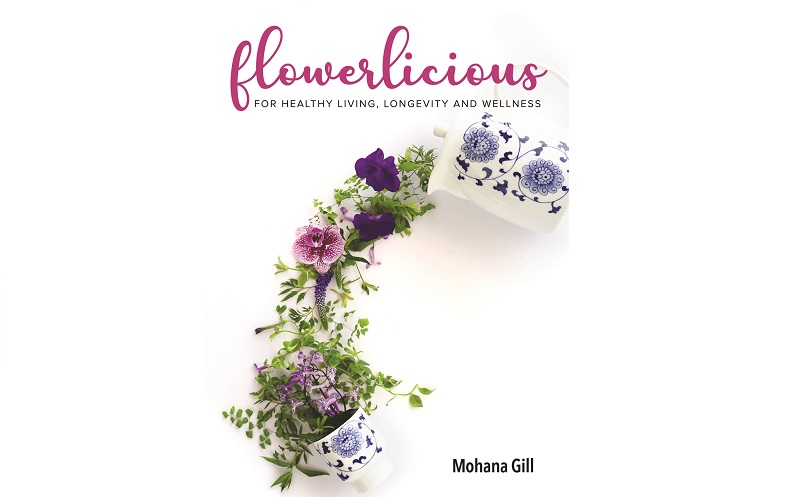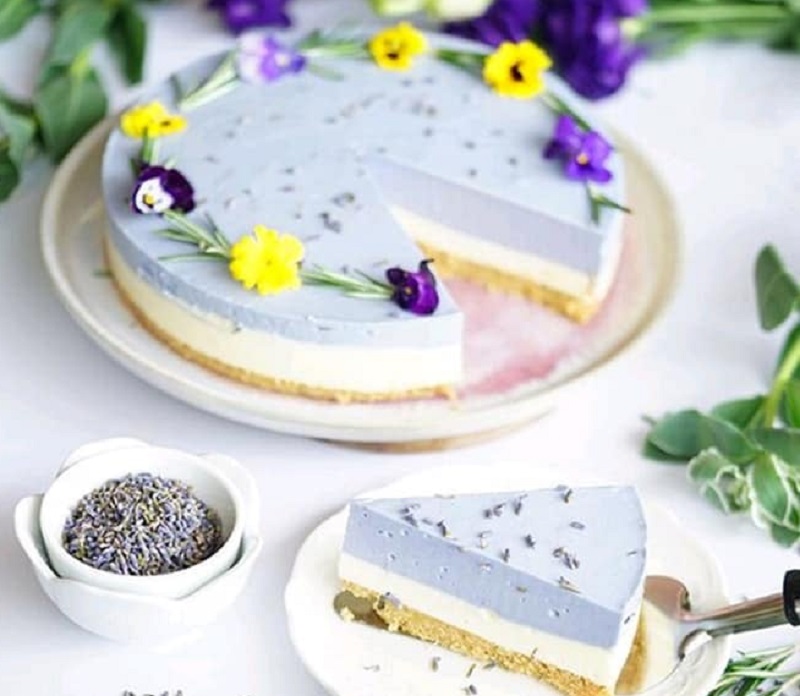
Mohana's final book highlights the joys of edible flowers (Photo: Mohana Gill)
Author Mohana Gill has published numerous books on food, winning a Gourmand World Cookbook Award in the process. Options speaks to her about her latest work, Flowerlicious: For Healthy Living, Longevity and Wellness.
Options: How did the idea for your new book, Flowerlicious, come about?
Mohana: Flowers play such an important part in our lives. It is something everyone loves and which makes everyone happy, no matter which part of the world you come from. We love to look at flowers, touch them, feel them, smell them, adorn ourselves with them and even use them in our food. We also know that besides just being pretty, flowers actually provide tangible and immeasurable benefits.
Since this was the last book I would be writing, I wanted it to be something different, spectacular and very special. I wanted to write about something that would be of interest to everyone and would make everyone happy.
In today’s world, we are all so stressed, no one seems to have any time for anything … not to “stop and smell the flowers”, so to speak. So I thought a book about flowers would be a lovely deviation from the norm.
I wanted a book that everyone — not just chefs or people interested in cooking — would read. People would buy it because of the beautiful colours, the layout, the unusual recipes and just to look at a book that will make them happy. Whether you are looking to improve your work life, or you just want to feel a little bit happier every day, surrounding yourself with flowers is a small yet impactful change you can make.
How is this book different from Fruitastic! and Vegemania!?
The format and the concept of Fruitastic! and Vegemania! are different; both provide a lot of information about fruits and vegetables, their nutritional values and some facts on their evolution. The books were divided into two parts: the information and recipes.
Flowerlicious, on the other hand, flows from page to page and chapter to chapter and makes for very interesting reading. All three books have the same theme of healthy living, wellness and longevity but Flowerlicious is more vibrant, I think, more exciting and interesting.
Flowerlicious pays homage to the abundance of nature with a collection of 60 recipes artistically crafted to highlight the versatility and benefits of edible flowers. It is a celebration of relationships and lives. [Flowers are] a natural moderator of moods and have strong positive effects on emotional health.
flowerlicious_-_cover_1.jpg

What was your first or most memorable experience with edible flowers?
Growing up in Myanmar, flowers were a very important part of our lives. Whenever I went out to a function or party, part of dressing up involved flowers. I also remember nibbling on flowers in the garden as a child … picking rose petals or marigold and, of course, moringa flowers.
My most memorable experience with edible flowers was during the Japanese occupation. It was 1943, the war had broken out and all the schools were closed. We had several moringa trees in our garden and all of them were in full bloom. All colleges in Yangon (the capital at the time) were also closed, so the students were back home.
One of my mum’s friends whose daughters were studying in Yangon had come to visit us. She saw the beautiful moringa flowers on the trees and told my mother that she would love to have some of them as they were very delicious.
The next morning, a little boy of about 12 was called to help pluck the moringa flowers while the rest of us children stayed under the tree. Suddenly the branch on which the boy was standing broke. He fell on my sister and broke her leg. That was, I think, my first taste of moringa flowers and I always associate them with that story.
Later on, I learnt about the health benefits of the flowers. We use them quite extensively in our home now as we have a few moringa trees.
Many years ago, when I was writing my book Myanmar Cuisine, Culture & Customs, I travelled back to the house where we lived. And lo and behold, after 60 years, the moringa tree was still there and in full bloom!
Do you have a favourite recipe(s) in Flowerlicious?
It is very difficult to pick one recipe as there are so many very delicious and beautiful ones. But if I had to choose one, it would be Nasi Lemak with Moringa Flowers. Apart from the fact that it is our national dish, my version contains a lot of nutritional benefits and is delicious, if I may say so myself! Plus, it brings back meaningful memories as I have incorporated moringa flowers [into the recipe].
What inspires your recipes?
I look at various recipes that have been written by different people over many, many years. I think of what would be a good recipe in this day and age.
Because of the fact that time is a very important factor, I look at writing recipes that are not too complicated and will not take too long to execute. I also think that today, nutrients in the food are much more important and everyone wants to eat healthy. I am inspired by the fact that I want more and more people to eat healthy food.
Variety is also very important as we all love to eat different foods. So my inspiration is to come up with recipes that are varied, nutritious, delicious and can easily be prepared — a tall order!
mohana.jpg

What advice would you give someone who is trying to eat healthier?
I think eating healthier is a mindset. People should not get so pedantic or stressed over healthy eating. There are people who try different diets at different times, follow fads and get quite freaked out at dinner time. To be able to function properly, our body needs all the nutrients that come from a variety of foods — proteins, carbohydrates and fats, plus vitamins and minerals. I think moderation and balance are most important to maintain a healthy weight and have the best chance of staying in good health.
Healthy eating is a pattern of eating that supports your best possible physical, mental and emotional health. I also think that healthy eating is the overall way we interact with and approach food in our lives. It means having a positive relationship with food, enjoying it and feeling comfortably satisfied after eating, without feeling guilt or shame. It also means taking pleasure in food with others and as part of celebrations and culture.
We all should eat the foods that we enjoy, but consciously add more fruits, vegetables, nuts, whole grains, etcetera. To practise healthy eating, we need access to affordable nutritious food and we need the knowledge and skills to gather and prepare it. Healthy eating is more of an art than a science. Finding a balance in eating is fundamental, and pleasure and variety are very important.
What is food to you?
Food to me is about childhood memories. I have a really deep and personal connection with food. It started when I was very young. I loved being in the kitchen as much as I could and watch my mother cook. She was a very good cook, always innovating and making yummy dishes. I was always cooking with her and she showed me what food was all about: bringing families together.
It is a beautiful thing to be able to create something and share that with family or friends and bring them joy. Till today, my greatest pleasure is to cook and feed people. I feel happy in my own life because I can give other people joy … that is when I am happiest and that is what keeps me going.
Hospitality relates to food. You host, you’re hospitable, you bring people into your home and that’s the connection with food. Through food, we bring people together and that is happiness.
Get your copy from Kinokuniya Malaysia. This article first appeared on Feb 24, 2020 in The Edge Malaysia.


